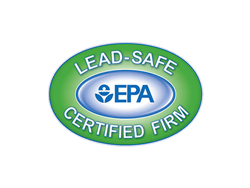
PSI (per square inch) is the unit of measurement that shows the strength of concrete structures against loads and pressures from the environment. It is the amount of force needed to break one square inch of concrete. This measurement gives a standard way to figure out how strong concrete is, so engineers, contractors, and builders can define and check how well concrete works in different situations. For example, 4000 PSI means that concrete can hold up against 4000 pounds of pressure per square inch before it breaks.
The importance of PSI in Measuring Concrete Strength
PSI is crucial for measuring concrete strength. It helps prevent failures and improves overall safety in buildings by making sure concrete meets structural requirements.
Structural Safety
PSI ratings are important to ensure that concrete structures can safely support the loads they will face over their lifespan. It also helps builders design buildings and infrastructure that tolerate environmental stresses and prevent failures.
Quality Control
PSI offers a measurable standard that helps to preserve the quality of the concrete during production. Manufacturers can ensure consistency and reliability of their products by testing concrete mixes against these standards regularly.
Code Compliance
Building standards and regulations frequently demand that certain PSI requirements be maintained. In addition to ensuring the structure's safety, its compliance protects stakeholders from legal liabilities and potential structural failure.
Project Specifications
Precise specifications catered to the particular requirements of different projects are made possible by concrete PSI rating. It is essential for optimum performance since different applications, such as high-rise buildings or pavements, call for different strength levels.
Cost Effectiveness
Significant cost reduction can result from optimising concrete mix designs in accordance with PSI standards. Utilising the right material and strength allows projects to achieve the required durability and performance without going over budget with unnecessary resources.
Common PSI Ratings and their Applications
Understanding the different PSI ratings will help you make an informed decision if you are thinking about local concrete experts to replace or fix your concrete structure. Below are the different PSIs to help you understand the ratings.
2500 PSI Concrete
This is the normal choice for sidewalks in neighbourhoods. It is good for pedestrians and works in places where foot movement is the most important thing. 2500 PSI concrete is great for streets and other places where people do not walk much.
2300-3500 PSI Concrete
This is the type of concrete that is ideal for commercial areas like shops or places with a lot of foot traffic. This goes for all public places, new companies, schools, and colleges. Compared to other concrete, this one lasts longer and is less likely to break down for regular use.
4000-5000 PSI Concrete
This type of concrete is best for areas with a lot of high traffic, like heavy industrial areas, city centres, and places where a lot of cars drive by. In these places, the streets are subject to a lot of weight and wear. In order to handle the pressure, the concrete needs to be stronger.
What is the best PSI for Driveways and Sidewalks?
According to local building regulations, a minimum of 2500 PSI may be enough for concrete slabs that will hold lighter loads, like steps, sidewalks, patios, and flatwork inside homes. 3000-4000 pounds per square inch is usually the right amount of pressure for a normal residential concrete driveway or garage floor slab to be able to hold up under heavy car traffic.
PSI for Driveways
When choosing the right PSI for your driveways, its crucial to keep in mind the weather and the weight of the cars that will be using it. For the best durability, a 4000 PSI ready mix concrete or even higher may be suggested if it will be used by a heavy vehicle like an RV or truck or will freeze and thaw often.
When you replace your sidewalk, you must use the right PSI. Different estimated PSIs are needed for different tasks. For sidewalk slabs, the concrete must have a PSI of 3500 to 4000. It is made up of three quarters of sand, stone, and cement, with 6 to 7% air added.
How Do You Test the Compressive Strength of Concrete?
Testing a concrete mix's compressive strength or ability to hold weight is the only way to know if it is good for tasks. These tests are done on cylinder-shaped concrete samples using a machine that squeezes them until they crack or break. Usually, the higher the PSI rating or the force that will break per square inch of concrete surface area, the stronger and longer-lasting the concrete will be.
Keep in mind that concrete cylinders are usually tested 28 days after they are made to make sure that the quality is good and to see if the compressive strength levels are acceptable. Even though concrete will keep getting stronger after 28 days, the amount of water consumed during this period gives you a good idea of how strong it will be in the end.
Conclusion
The choice of concrete is crucial when constructing concrete buildings, including sidewalks and driveways. To make them strong, efficient, and last longer, the proper PSI concrete is required. By accessing the climate conditions, traffic patterns, and their intended use, you can make an informed decision. To get the best PSI concrete for your project, you may consult with concrete experts and get their insightful guidance. Choosing the right PSI ratings ensures the strength of your sidewalks or driveways and preserves their functionality and safety.




